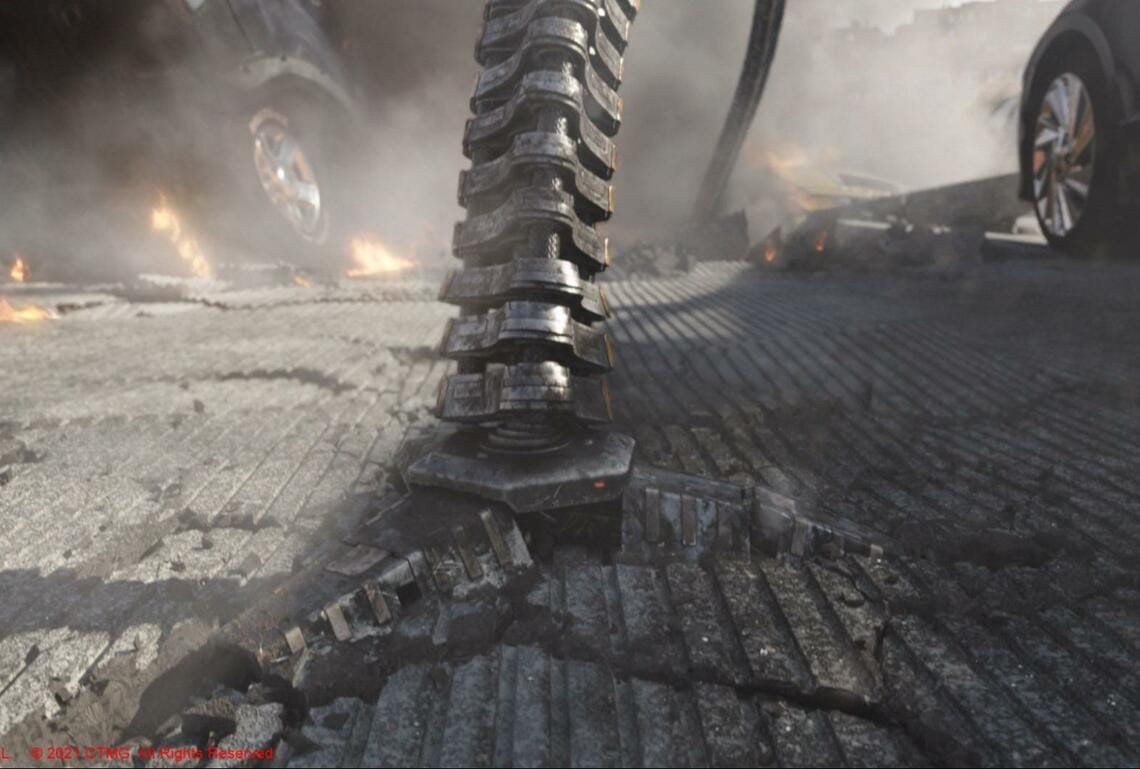Learn how famed VFX studio Digital Domain used V-Ray to render seamless digidoubles for the friends and foes of Spider-Man: No Way Home.
It wasn’t just classic villains that No Way Home brought back to the Spider-Man franchise. The blockbuster brought photoreal V-Ray rendering back to the franchise after its previous use on Spider-Man: Homecoming. This time, V-Ray was used across all character work on the film—helping to recreate the Iron Spider, Peter Parker, Doc Ock, and more for big screen in style.
To learn more, we caught up with several team leaders — including VFX Supervisor Scott Edelstein, CG Supervisors James Stuart and David Cunningham, DFX Supervisor Rob Frick, and Animation Supervisor Frankie Stellato — who brought us behind the scenes on how Digital Domain created everything from Doc Ock’s new tentacles to an entirely CG Spidey suit. Discover what they had to say below and remember if you’ve still not seen the film, there are spoilers ahead!
This isn’t Digital Domain’s first Spider-Man project! How did your work on No Way Home compare to Homecoming?
Rob Frick, DFX Supervisor, No Way Home: Both projects involved significant challenges. On Homecoming, we built a full CG environment asset for the Staten Island ferry scene. We then had to figure out how to recreate the same asset, but have it be split into two pieces as the story involved a Chitari weapon malfunction damaging the ferry.
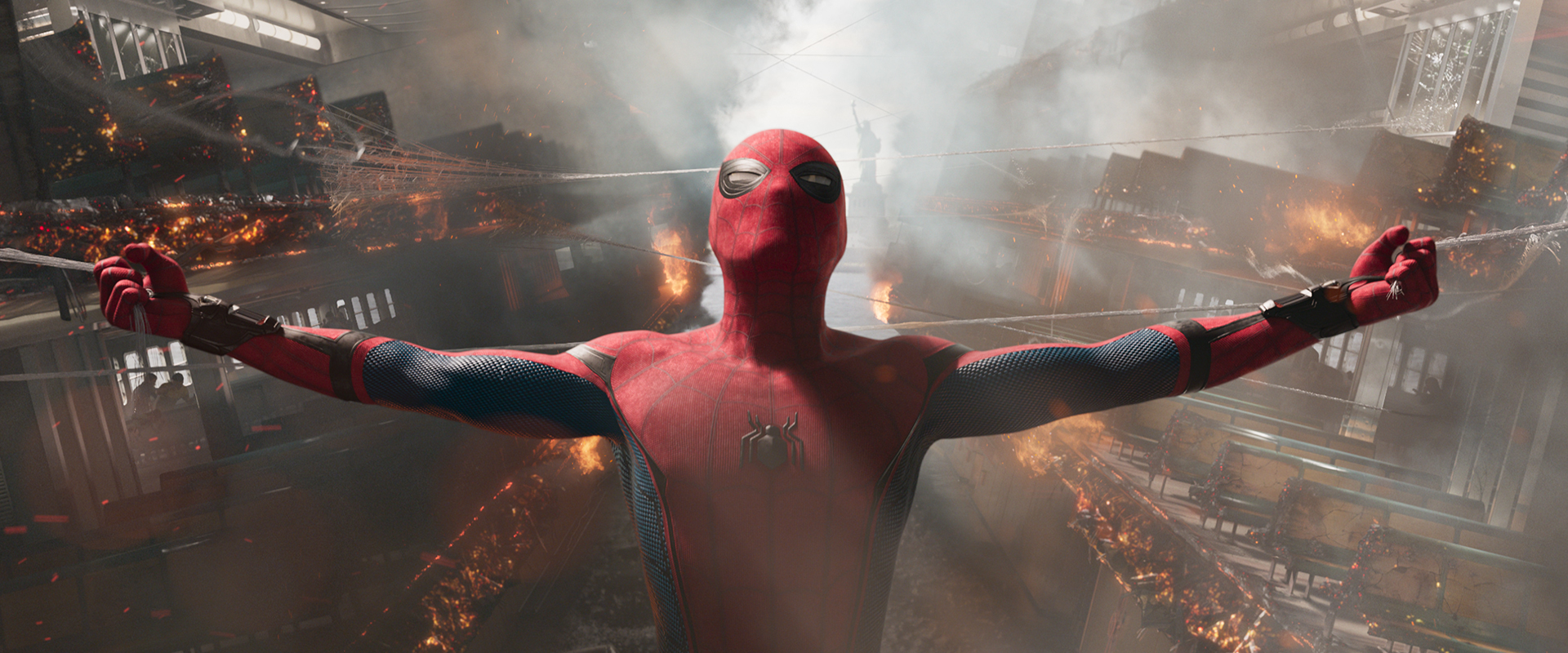
We didn’t want to recreate the split version of the ferry from scratch, particularly considering the size of the asset. Instead, we modified some of our workflows so that we could reuse textures and lookdev from the main intact ferry asset on the secondary split ferry asset. We were able to replicate this on No Way Home for the Alexander Hamilton bridge environment, which was much larger in overall scale. We were also able to reuse our web shooter setup and Houdini web lookdev from Homecoming on our No Way Home work, which was useful.
Digital Domain is a long-time V-Ray user. How was it used on Spider-Man: No Way Home?
David Cunningham, CG Supervisor, No Way Home: We used V-Ray for all our character work on No Way Home. We have standard skin templates within V-Ray that we have refined over the years, and they helped us retain the level of quality Digital Domain is known for when it comes to our digidoubles. We’ve also created a custom V-Ray render time procedural for our proprietary groom system, Samson. This enables us to render hair efficiently. V-Ray was used for the Iron Spider, Peter Parker, Doc Ock, Aunt May, Electro, and three of our four Green Goblin variations, primarily in our sequences at Happy’s Condo. The Iron Spider and Doc Ock were also rendered with V-Ray in our high bridge sequence.
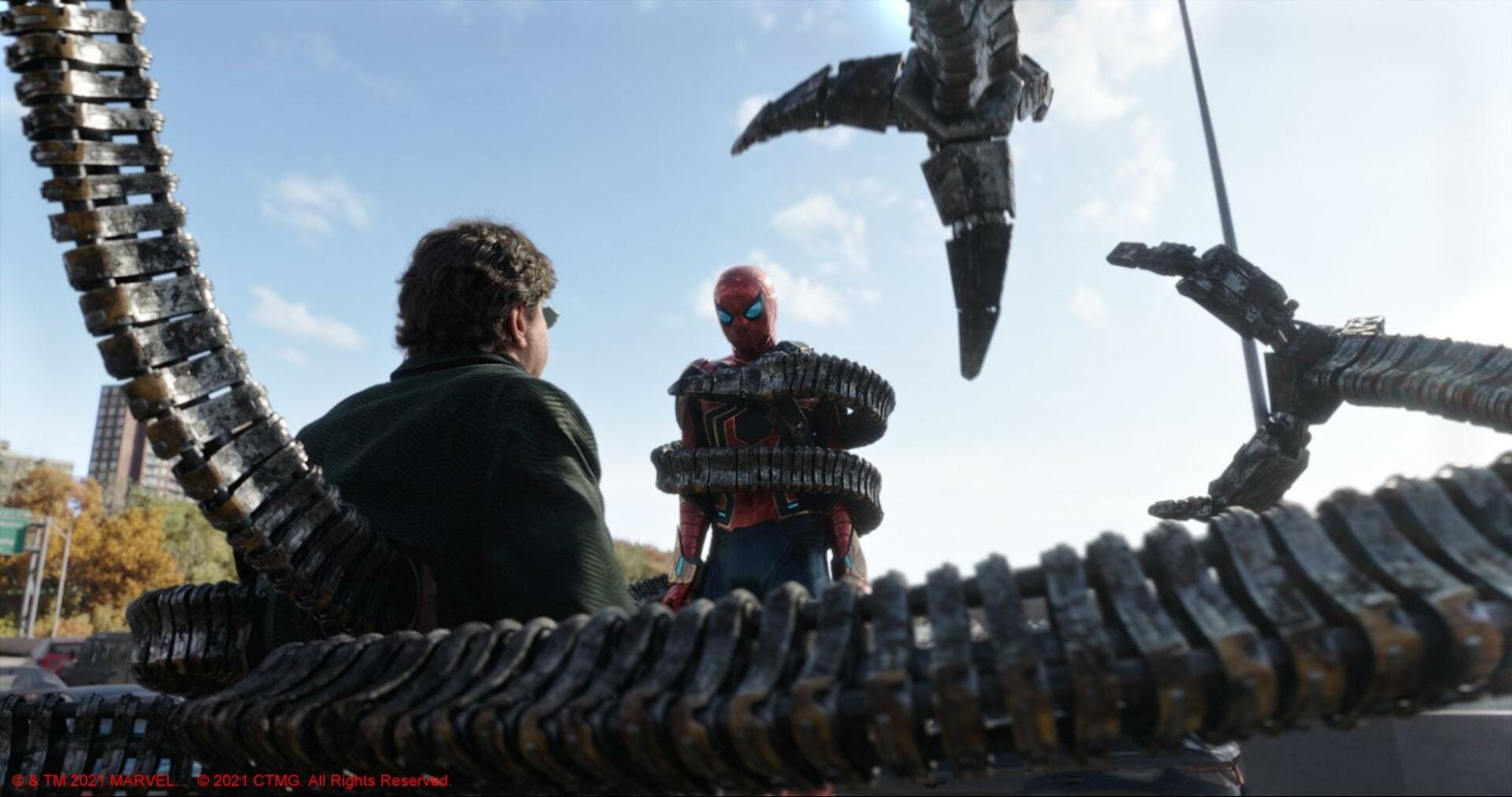
In Spider-Man: No Way Home, you had to bring back Doc Ock, a series favorite for long-time fans. How did you recreate the tentacles? What rules did you impose on them?
Scott Edelstein, VFX Supervisor: We looked at a lot of references from the previous film to start. Unfortunately, Sony didn’t have the digital asset any longer but they did have an old physical prop model we could look at. We started with scans from the prop before modeling and texturing our CG asset from scratch. We then went through multiple iterations and rounds with the client to dial in the look of the new tentacles. Throughout our work, our main goal was to give them weight and strength while grounding them in real-world physics. Doc and his tentacles had to maintain balance to make everything feel as real as possible. We also regularly compared our work to the original film to ensure all our details were accurate and to see how some materials reacted so that our design could be closer to the film version.
Was there anything unusual about each tentacle, and how did you keep track during production?
Frankie Stellato, Anim Supervisor: The two arms and two legs were identical to each other. During production, we color-coded them to make them easier to notice, both internally and externally. We also named them based on Alfred Molina's story about the first film and gave them separate personalities. The upper arms were Mo and Flo while the lower arms were Larry and Harry. Mo and Flo were the brains while Larry and Harry were the muscle.
What suits did Digital Domain create for Spider-Man in the film?
Rob Frick, DFX Supervisor, No Way Home: Our primary suit was the Iron Spider. Unlike the Homecoming Spidey suit, which was difficult to nail the look of as it’s a unique fabric with complex surface qualities, the Iron Spider was metallic, which made it more straightforward for textures and lookdev. After ingesting the Iron Spider suit from previous films, we made lookdev changes to make it more glossy for the exterior bridge sequence. We added a clear coat similar to car paint so it stood out and really popped on the bridge.
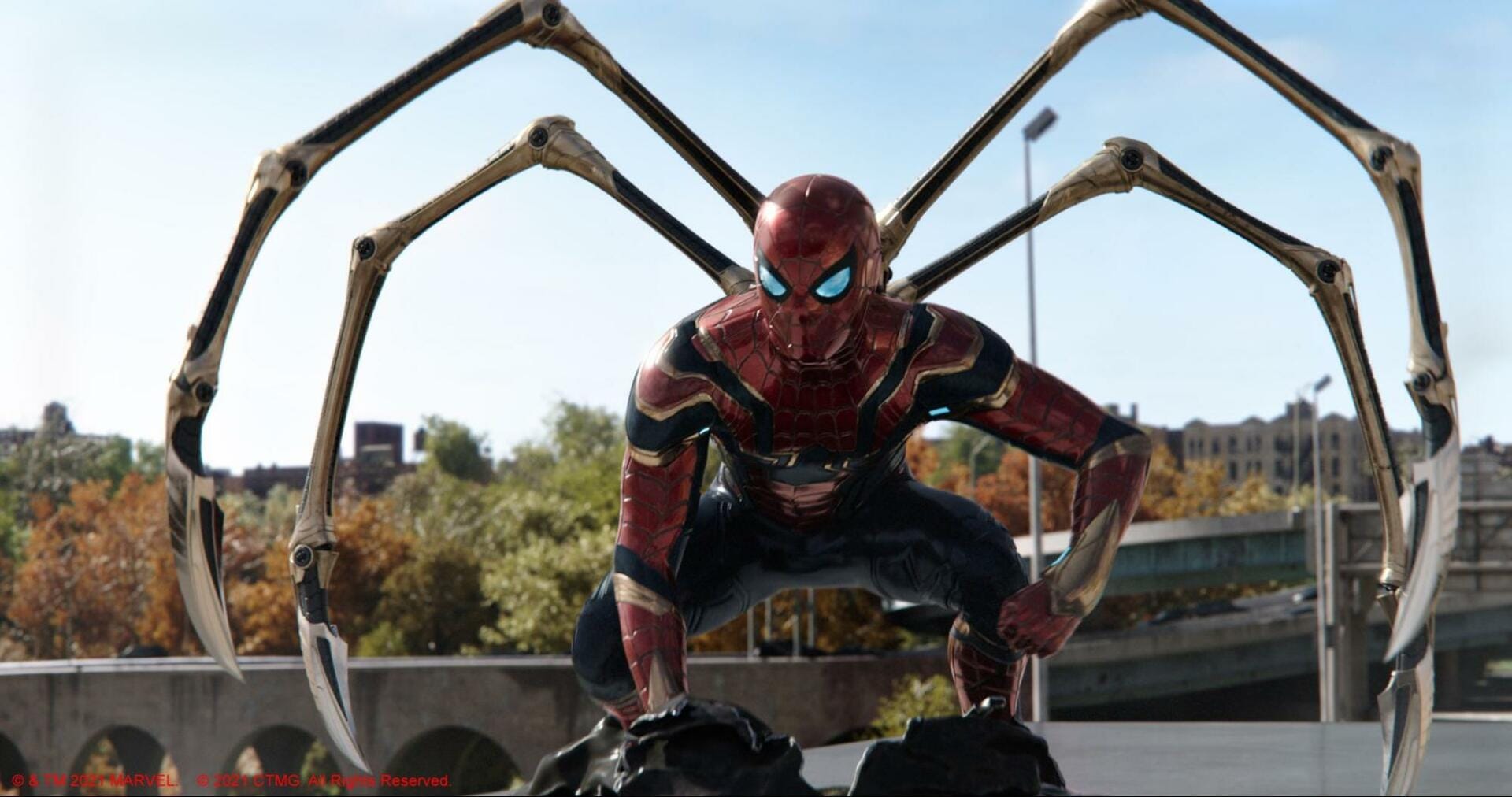
David Cunningham, CG Supervisor, No Way Home: To do this, we referenced a physical bust on set, which we then worked on adding different damage levels to. There’s even a shot where part of the suit gets ripped off by Doc Ock, and the suit is so damaged that Peter’s shirt and tie are visible!
James Stuart, CG Supervisor, No Way Home: Another suit that we created damage progression on was the Hybrid suit, which we worked on using a base provided by SPI. Our new damaged Hybrid suit was then sent back to SPI for them to include in the final battle sequence. We also created the nano effect that transitioned the Iron Spider suit into the Hybrid suit.
How often was Tom Holland’s suit CG? How did you apply the suit to digidouble versions of Holland?
Scott Edelstein, VFX Supervisor: When Tom Holland is in the Iron Spider suit and the hood is up, his whole body is completely computer-generated. When the hood is down we match the 3D suit to Tom Holland’s real neckline so that his head is real. Later in the film, once Spider-Man acquires the Hybrid suit, his body is completely CG for the rest of the entire movie because that suit didn’t exist during principal photography.
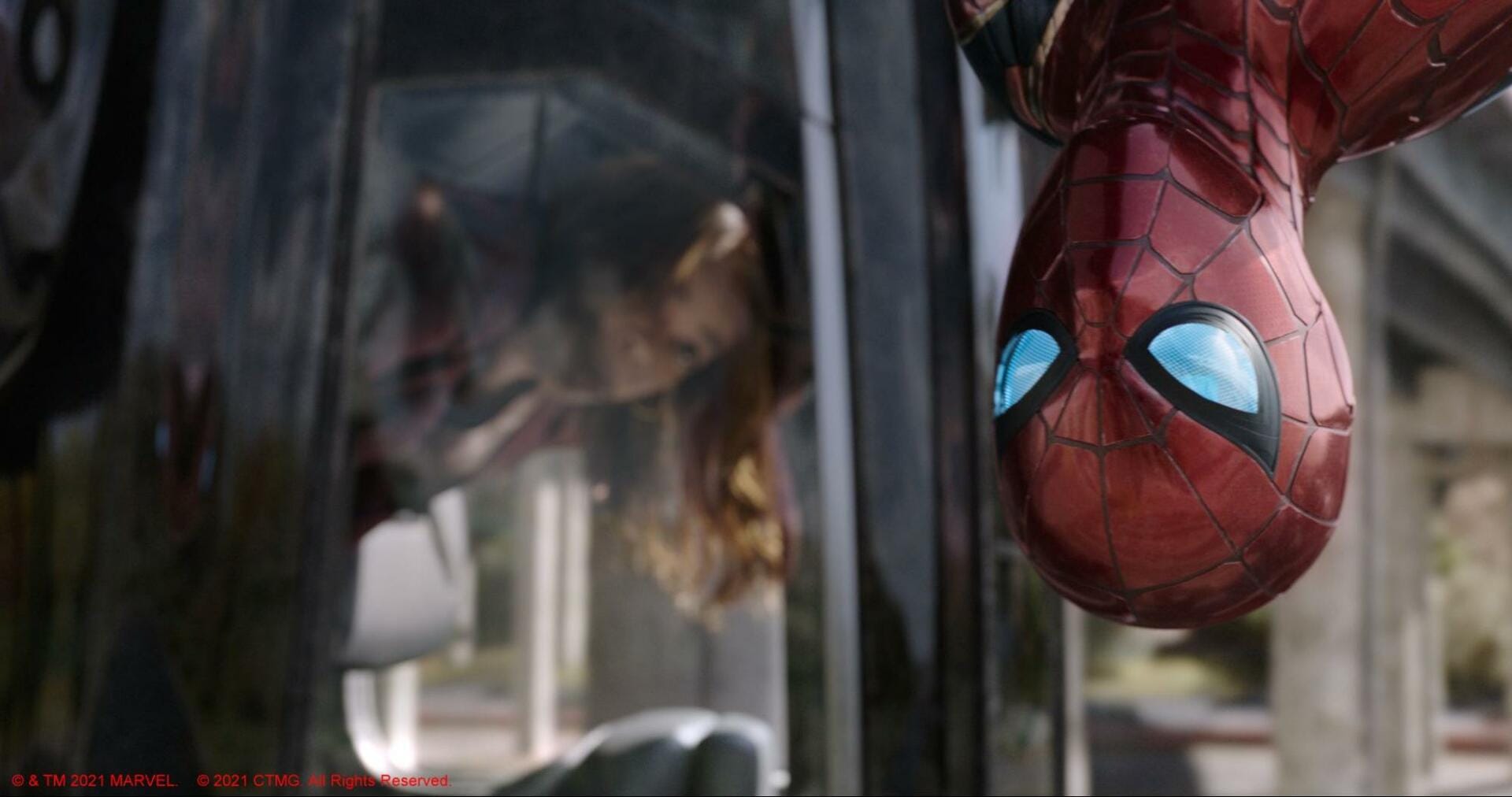
For Digital Domain, the two sequences — the Doc Ock bridge fight and Happy’s Condo — combined meant we had to do about 400 digital body replacements. We started with a very tight rotomation of Tom’s body and head so that we could place the digital asset on top of him. From there, the animation department would either clean up the curves or add additional animation on top. We always tried to keep as much of Tom's performance as possible, though occasionally Spider-Man needed to do things that a human was incapable of so we needed to animate without a direct reference. Once the animation was complete, we’d do modeling passes to match the muscles as close as possible to the plate reference and refine the neckline so that it would stick better. Next, we rendered and then sent passes to the compositing department to bring the final scene together.
There’s an amazing sequence in the film where the nanites from the Iron Spider suit are transferred to Doc Ock. How did you go about designing this sequence and how did the rendering pipeline come into play?
Scott Edelstein, VFX Supervisor: After the design of the nano spines was approved, we started with animation where we drove the timing and movement of the spines as they locked down onto Doc Ock’s tentacles. In parallel, the FX team began iterating on the look of the nanites creeping along his arms. We went through maybe a hundred or more iterations until we settled on a look.
Multiple passes from FX were generated from Houdini for the compositing team and a cache of the geometry was provided to the lighting team. The nanite transition was rendered in V-Ray as an additional pass and then combined in Nuke.
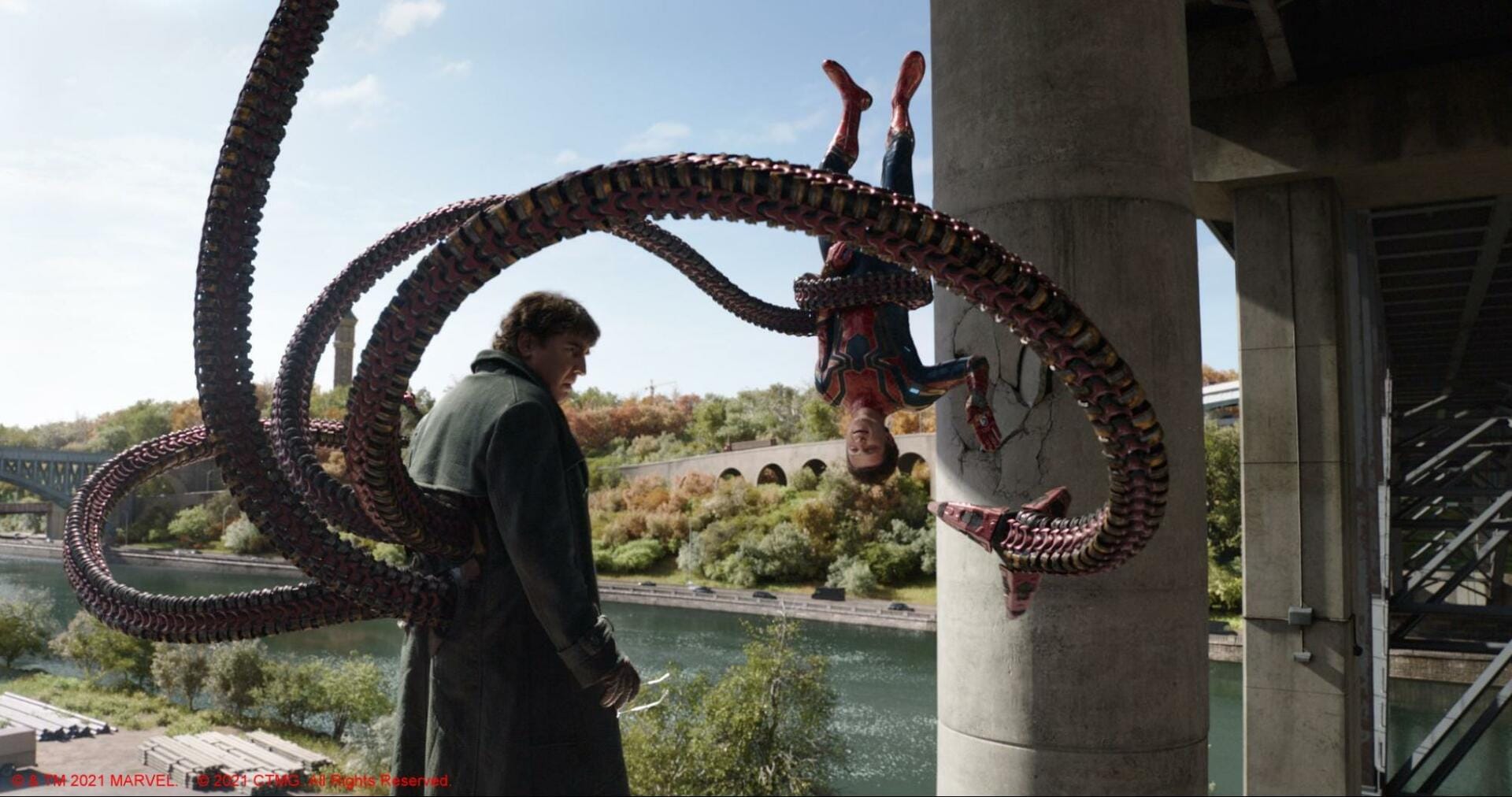
That bridge sequence also has quite a bit of crowd work in it, how much of the crowd was digital? What did you use to create them?
Scott Edelstein, VFX Supervisor: There were a few shots at the beginning of the fight as people ran away where we used plates, but for the most part, the bridge sequence was entirely CG and all the crowds are digital. That said, there weren’t enough background characters to justify a full crowd system so most of the crowds were placed and animated into the scene by hand.
There’s a major fight near the end of Act 2. What was your creation process like there? How much of the set is physical vs. digital?
Scott Edelstein, VFX Supervisor: The production team shot a lot of this sequence on a small practical set, however, due to editorial and story changes a lot of this ended up being fully CG. For the fight sequence, we recreated Happy’s entire apartment, as well as the hallway and the lobby of the building. The building itself also doesn’t exist so that was completely CG. Of course we try to keep as much of the photographed set as possible, but with all the interactive lighting and destruction that was happening, that often wasn’t possible.

